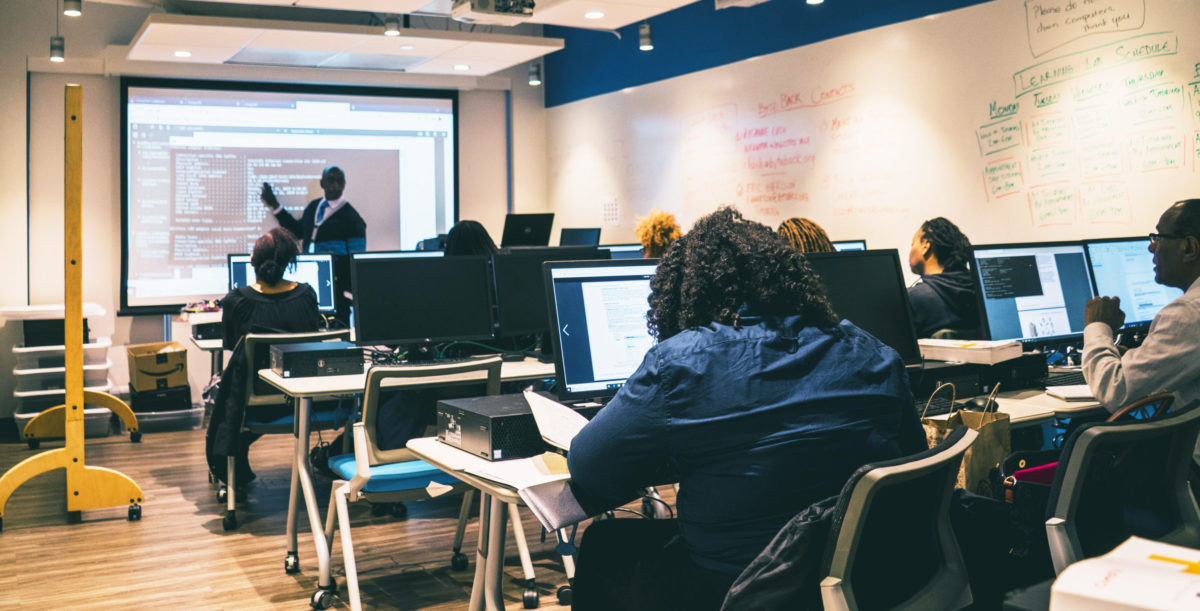I’m going to ask a question that will make many of you uncomfortable.
Think about the last few people who delivered food to your home or who you saw working at the grocery store or pharmacy. Which racial and ethnic groups did those individuals belong to? Were they white? Were they millennials? Would they fit in or stick out at your office?
The COVID-19 crisis has once again laid bare the pernicious and overt impact of the history of racism and white supremacy in the United States.
According to our lord and savior Dr. Anthony Fauci, while Blacks don’t seem more likely to get infected by the virus, “underlying medical conditions, [including] diabetes, hypertension, obesity, [and] asthma” might all be causing the increased rates of hospitalizations and death among African Americans.
We are literally dying because we don’t get equal medical care, we have less access to healthy food and safe communities, and because our communities have been polluted for decades. So what does this have to do with the race and age of your last Drizly delivery person? And why are you reading about this here?
What we are seeing in our society is not just the impact of racism but how racism is indelibly intertwined with the digital divide. The digital divide isn’t just an abstract concept — it’s a main driver of inequality that we can no longer ignore.
Those of us with access to technology can be safe(r) and earn a livelihood. Those without access cannot. And it’s not a mistake or a coincidence that they are largely Black and Brown.
According to the Pew Research Center, Blacks and Hispanics in the United States are significantly less likely than Whites to have a computer and broadband internet at home. And Blacks and Hispanics are more likely to have to depend on their smartphones as their sole source of access to the internet.
Those of us who are able to work from home are only able to do so because we have three things — a working computer, broadband access and the technical skills needed to use our devices.
We log into our laptops and Zoom calls and Slack channels every morning from the safety of our homes, many of us still earning our salaries and paying our bills and using Instacart and Amazon and Postmates to get us through.
But the people who live on the other side of the digital divide — most of whom are people of color, many of whom are people in their 40s, 50s and 60s — can’t work from home. Maybe they don’t have a laptop. Or they don’t have broadband, making a Zoom call a pipe dream. Or they only have a phone, which is not adequate for eight hours of virtual work. Or they don’t have the training to navigate new software or troubleshoot tech glitches at home.
And so, they go into work at the grocery stores that run out of toilet paper every morning. They drive across the city and go into a restaurant to pick up our ramen or sushi or small plates. They ring our doorbells, which have been touched by all of the delivery people before them. And they are getting sick.
The digital divide has always disproportionately impacted the same communities that have always been left behind in the United States. That’s not new.
But what we’re also seeing now is that those of us with access to technology can be safe(r) and earn a livelihood. Those without access cannot. And it’s not a mistake or a coincidence that they are largely Black and Brown.
I hope that most of you were able to sit in your discomfort to get this far. I know it’s hard to talk about these issues — but they’re important, and we’re not without hope. We can all do something to make a difference so that we can become a more equal society on the other side of this. Here are some ideas:
- Donate to nonprofits focused on bridging the digital divide for communities of color. Some of my favorites are the organization I run (shameless plug), Byte Back, as well as the National Digital Inclusion Alliance and OATS.
- Consider donating gently used (i.e. something you would still be happy to use) laptops to nonprofits that are providing devices to communities in need. Byte Back, the Wilderness Technology Alliance and the National Cristina Foundation are three great choices.
- Write to your elected representatives and local government officials and urge them to support funding for digital inclusion. For example, Byte Back’s funding for digital literacy classes from the DC Office of the Chief Technology Officer was cut in the fall. We had to significantly reduce the number of classes we taught in communities of color in D.C., which meant that dozens of D.C. residents lost the opportunity to get vital digital skills before this crisis began.
- Talk to your friends about these issues. Bring up the fact that there are millions of people in our country who are forced to put their lives at risk because they can’t work from home.
I think the D.C. tech community is more diverse and dynamic than any other in the country. But in order for us to truly become inclusive, we have to grapple with race and inequality. We have to recognize the roles we play, get uncomfortable, and work together to make things better. It’s the only way that we’ll all make it out of this, hopefully in a better place than before.







